بارودي يؤكد صوابية طلب لبنان الخاص بالمباحثات والمفاوضات على الحدود البحرية
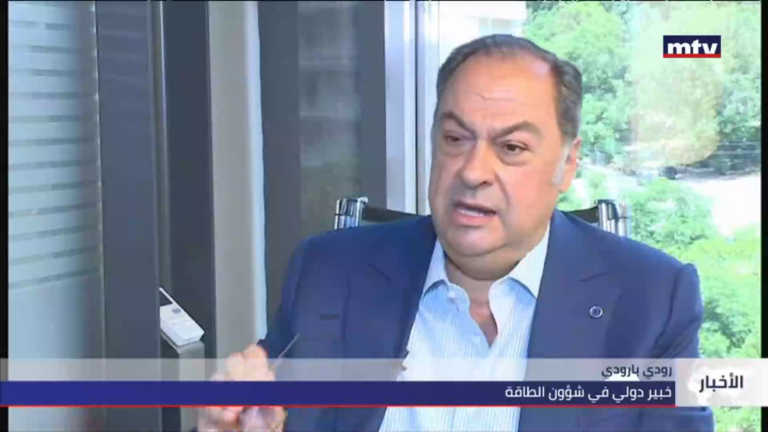
بارودي يؤكد صوابية طلب لبنان الخاص بالمباحثات والمفاوضات على الحدود البحرية ويؤكد صوابية طلبه مستعيناً بقضايا مماثلة حصلت في السابق وتم البت بها من قبل محكمة العدل الدولية

بارودي يؤكد صوابية طلب لبنان الخاص بالمباحثات والمفاوضات على الحدود البحرية ويؤكد صوابية طلبه مستعيناً بقضايا مماثلة حصلت في السابق وتم البت بها من قبل محكمة العدل الدولية
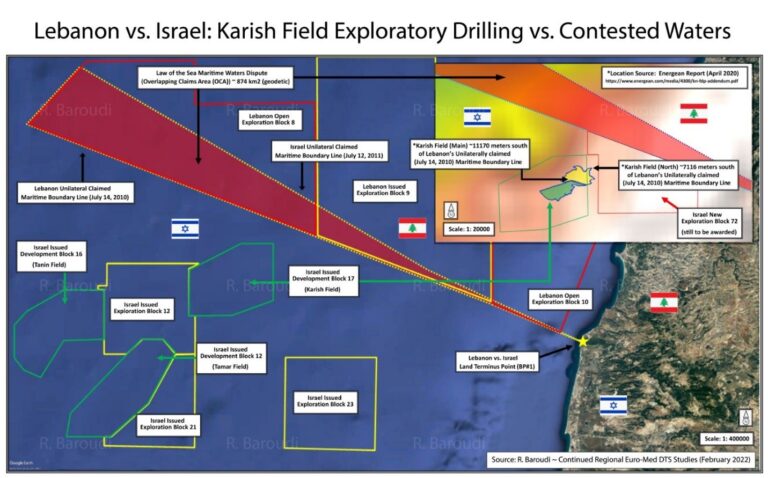

كَثُرَت في الفترة الأخيرة الخيارات المتاحة في نظر بعض المسؤولين في لبنان، لتأمين مصادر يتم عبرها تسديد أموال المودِعين… فما أن طُرِح إنشاء الصندوق السيادي، حتى ارتأى البعض اللجوء إلى رهن جزء من احتياطي الذهب… لكن ما لم يكن في الحسبان أن يقترح أحدهم استخدام أموال ثروة لبنان النفطية لتسديد الودائع ولتغطية كلفة الدين العام! علماً أن مفاوضات ترسيم الحدود البحرية بين لبنان وإسرائيل عالقة منذ أيار 2021، ولا تزال الضبابية تلف هذا الملف محلياً ودولياً.
الخبير الدولي في مجال الطاقة رودي بارودي يعلّق, في حديث إلى موقع القوات اللبنانية الإلكتروني، على الفائدة المالية من حقول النفط التي يؤمَل أن تشكّل الثروة النفطية للبنان، ليؤكد أنه “في حال حصول لبنان على جزء من حقل كاريش, فإن حصته لا تكفي لتغطية الدين العام اللبناني حتى وفق أسعار النفط والغاز المعتمدة حالياً”، ويقول “ربما قد تغطي حصّة لبنان من حقل كاريش أو غيره، جزءاً ضئيلاً فقط من الدين العام”.
ويعتبر أنه “من غير المؤكد ما إذا كان لبنان سيتمكّن من الحصول على الخط 23، من دون معالجة مجموعة من الأخطاء الجسيمة التي ارتُكِبَت عند البدء بوضع الخطوط من 1 الى 23 قبل نحو 12 عاماً”.
ويكشف بارودي عن أن حقل “كاريش” المكتشَف العام 2013 يحتوي على 2.5 ترليون قدم مربّع من الغاز. وهذا الحقل تم اكتشافه من قبل الشركة الإسرائيلية “ديليك” العام 2013 والتي باعته بدورها إلى “إينيرجيان”.
ويقول، إذا تم احتساب الكمية على أساس أسعار الغاز والنفط الحالية، فإن المردود المتوقع من حقل “كاريش” يتراوح ما بين 22 و25 مليار دولار أميركي. لكن لا يمكن تقدير مردود حقل “قانا” لأنه قد يكون ممتداً إلى إسرائيل، كما أن حقل “كاريش” متداخل بين لبنان وإسرائيل.
ويُلفت إلى أن إسرائيل أنجزت التحضيرات اللازمة لبدء الإنتاج النفطي وذلك بعد أعوام عدة من الدراسات وعمليات الاستكشاف، فقد عاودت شركة “إينيرجيان” المطوِّرة لحقل “كاريش” الحَفر في الحقل ذاته بحثاً عن المزيد من الغاز والنفط، ويوضح أن “إسرائيل تقوم حالياً بالحَفر في محاذاة الخطّ اللبناني التفاوضي “29” لتنتقل بعد ذلك إلى شمال “كاريش”.
ويُذكِّر في السياق بأن “لبنان أعلن في رسالَتَيه إلى الأمم المتّحدة الأولى في 22 أيلول 2021 والثانية في 28 كانون الثاني 2022، أن حقل كاريش يقع في منطقة متنازع عليها… لكن على الرغم من ذلك، يتم التنقيب في المياه المتنازَع عليها عموماً، ولا سيما في البلوك رقم “9” المُعطّل حالياً إلى أن تُحّل قضية الترسيم بين لبنان وإسرائيل”.
أما بالنسبة إلى الموقع الجغرافي لحقل “كاريش” المكوَّن من جزءين: شمالي وجنوبي (الخريطة مرفقة)، يؤكد بارودي من خلال الدراسة التي أعدّها خلال السنوات الممتدة من العام 2011 إلى العام 2021، أن “حقل كاريش الشمالي يَبعد عن الخط المقترح من قبل لبنان في 14 تموز 2010 (الخط 23) حوالي 7 كلم و116 متراً، كما أن حقل كاريش الجنوبي يَبعد عن الخط نفسه، حوالي 11 كلم و170 متراً جنوباً، وذلك بحسب الخريطة المرفقة والتي تؤكد المواقع والبُعد عن الحَقلين”.
أما بالنسبة إلى البلوك الإسرائيلي الرقم “72” والمتداخل في الأراضي اللبنانية، فهو ملاصق بشكل مباشر للخط “23”، بحسب بارودي.
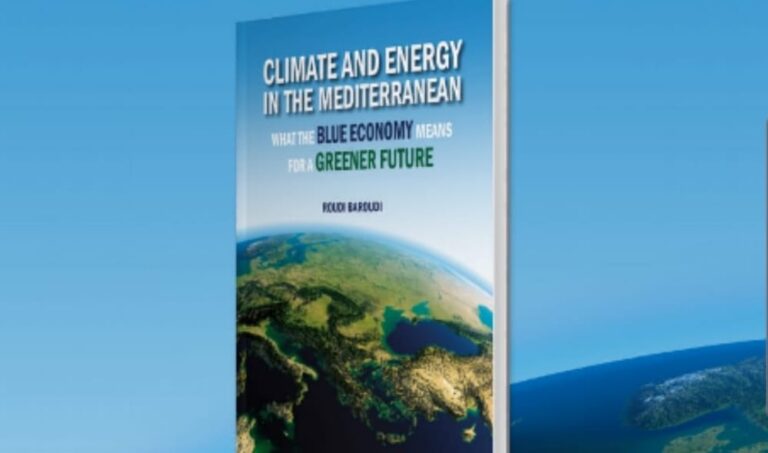

في الوقت الذي يفتش فيه لبنان عن وسائل ليست مكلفة لإنتاج الطاقة الكهربائية تاتي الأدلة تباعا التي تشير إلى أن استغلال الشمس والرياح في حوض البحر الأبيض المتوسط هي وسائل قادرة على تأمين الطاقة لدول عديدة في المنطقة ومن ضمنها لبنان الذي يتخبط منذ ٢٥ عاما من أجل تأمين الكهرباء من خلال الطاقات البديلة ورغم هذا التخبط يبقى الأمل موجودا إن وجدت الإدارة والإرادة لتفعيل هذا الملف،وفي هذا الإطار أتى الكتاب الجديد لرودي بارودي الرئيس التنفيذي لشركة استشارات الطاقة والبيئة القابضة ومقرها في الدوحة.
وقال الكتاب إن أنتاج الطاقة بواسطة رياح البحر الأبيض المتوسط الساحلية يمكنه أن يضاهي انتاج الطاقة من المفاعلات النووية في العالم أجمع،و أنه إذا اتخذت الدول الأورو-متوسطية الخيارات الصحيحة، فإن الطاقة المتجددة بالإضافة لأنشطة “الاقتصاد الأزرق” الأخرى المتعلقة بالبحر يمكن أن تشكل الأساس لنهضة اقتصادية إقليمية.
الكتاب وهو بعنوان “المناخ والطاقة في البحر الأبيض المتوسط:”ما يعنيه الاقتصاد الأزرق لمستقبل أكثر خضرة”،وقد نُشر هذا الكتاب من قبل شبكة القيادة عبر الأطلسي،وهي مؤسسة فكرية مقرها واشنطن العاصمة، بالتعاون مع مطبعة معهد بروكينغز.
يحث الكتاب صانعي السياسات على اغتنام فرصة تاريخية أصبحت ممكنة من خلال التقدم التكنولوجي السريع،ويدعو بارودي الحكومات المتوسطية للتعامل مع البحر ككنز مشترك عابر للأجيال، من خلال الاستفادة بشكل أساسي من التقنيات الجديدة لإدارة موارده واستغلالها بأمان وبشكل مستدام لتحقيق أقصى فائدة ممكنة منه على المدى الطويل.ويحتوي الكتاب على دراسة حصرية أجرتها شركة فوغرو Fugro، المزود الرائد عالميًا للذكاء الجغرافي،والتي تقدر إمكانات طاقة الرياح البحرية في منطقة البحر المتوسط بحوالي 500 مليون ميغاواط – أو ما يعادل تقريبًا إنتاج الطاقة من جميع المفاعلات النووية البالغ عددها 440 على الكوكب.

و قال بارودي، الذي عمل في مجال الطاقة لمدة أربعة عقود، إنه في حين أن تغير المناخ وتلوث الهواء والحاجة إلى تقليل انبعاثات الكربون هي في حد ذاتها أسباب قوية للاستثمار في الطاقة الخضراء،فإن النتائج ستتجاوز بكثير الفوائد البيئية.
ولفت في خلال مؤتمر حوارات أثينا للطاقة،حيث تم إطلاق الكتاب بشكل مبدئي قبل طرحه الرسمي في وقت لاحق من هذا العام في واشنطن،إلى أن تقديرات قوة الرياح التي استخدمتها تستند إلى التقنيات القياسية الحالية المستخدمة في يومنا هذا و لن تحصل البلدان التي سوف تتبنى طاقة الرياح على الأسبقية في التحول من الوقود العادي إلى الطاقة النظيفة فحسب، بل ستكسب أيضًا مزايا اقتصادية واجتماعية ومزايا أخرى.
وأكد بارودي إن طاقة الرياح ستوفر على تلك البلدان المليارات من واردات النفط والغاز، وستزيد من أمن الطاقة لديها، وتجعل اقتصاداتها أكثر قدرة على المنافسة و سوف يجنب الهواء النظيف سكان تلك البلدان الأمراض والأوبئة، وسيوفر التطور والتنمية الصاعدة وظائف أكثر وأفضل لسكانها، ويحد من الفقر وعدم المساواة. وفي كثير من الحالات، ستوفر صادرات الطاقة المزيد من الإيرادات للاستثمارات في مجالات التعليم والنقل والبنية التحتية.
وقال بارودي: أشجع بقوة على الاستفادة القصوى من فرصنا كمنطقة واحدة، وكذلك على الحفاظ على موارد الطبيعة للأجيال القادمة. أردت أن يساعد الكتاب في جعل أكبر عدد ممكن من الأشخاص يفهمون القرارات المعروضة علينا ويفعلون كل ما في وسعهم – سواء أكانوا صانعي سياسات، أو مستثمرين أو أصحاب اعمال صغيرة أو مهندسين أو مواطنين، أوما إلى ذلك – لضمان اتخاذ القادة وغيرهم من صناع القرار الخيارات الصحيحة.
وأضاف بارودي: ما أقترحه هو أنه يمكننا ويجب علينا استخدام جميع الوسائل المتاحة لدينا، ليس فقط لإنتاج الطاقة النظيفة باستخدام الرياح البحرية، والطاقة الشمسية، والأمواج، والمد والجزر، والطاقة الحرارية الجوفية تحت سطح البحر، ولكن أيضًا لإعادة اختراع الركائز الأخرى للاقتصاد الإقليمي، من تربية الأحياء المائية ومصايد الأسماك التقليدية إلى السياحة والنقل البحري.
وختم بارودي كلامه بالقول يمكن للمعدات الحديثة والتطبيقات المبتكرة أيضًا أن توسع اقتصادنا الأزرق ليشمل مجالات مثيرة مثل الأبحاث البيولوجية لاكتشاف أدوية جديدة، أو التعدين الآمن والمسؤول في أعماق البحار للتنقيب عن المواد الحيوية المستخدمة في صناعة الهواتف المحمولة والبطاريات المتطورة التي ستساعدنا على الابتعاد عن الوقود العادي.
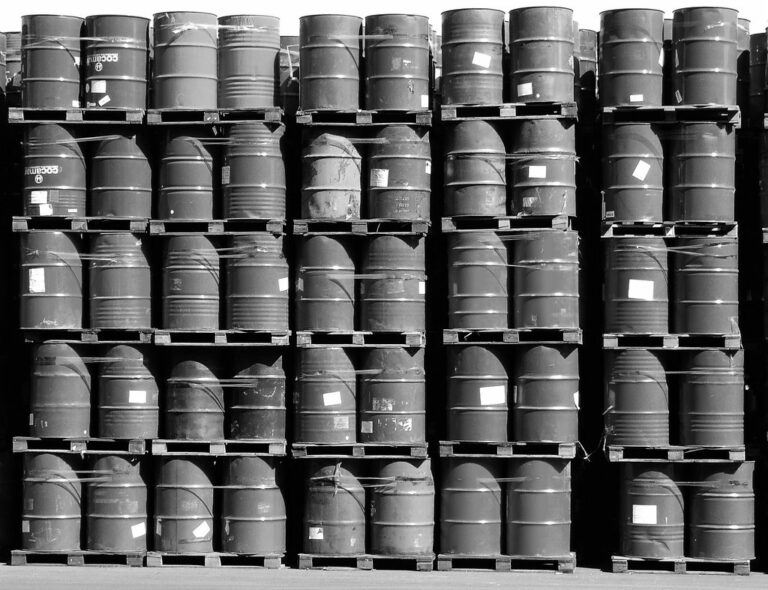
The alliance agreed to production hikes of 648,000 barrels a day for July and August, about 50% bigger than those seen in recent months. But there were doubts about the group’s ability to fully deliver the increases, given they will be spread across its members, many of whom have struggled to raise output.
Oil’s just capped its sixth straight monthly gain — the longest such run in a decade — and the rally now looks set to continue as the supply deficit widens.
Here’s what leading analysts had to say about the OPEC+ decision and what it would mean for oil prices.
OPEC+’s decision is beneficial to the US as it increases global supplies while keeping some spare capacity that can be deployed if sanctions on Russia sway markets, Bob McNally, president of Washington-based consultant Rapidan Energy Group and former White House official said in a Bloomberg TV interview.
Increased quotas will result in a 350,000 barrels jump in actual daily output, he said, adding that the decision was “an elegant threading of the needle” that satisfies OPEC, Russia and the Biden administration.
The latest deal to increase production quotas in July and August isn’t sufficient to make a difference in global oil balances, according to JPMorgan analyst Natasha Kaneva in an emailed note. The higher output won’t offset heightened demand at seasonal peaks alongside China’s reopening, with risks to the bank’s supply estimates skewed to the downside, it said.
The bank maintains its Brent price forecast of $114 a barrel for the second quarter and sees prices averaging $104 a barrel this year.
The latest OPEC+ decision translates to an increase of 200,000 barrels a day in summer output levels with Russia still keeping its quota share and many countries falling behind target, analysts Damien Courvalin and Callum Bruce said in a note. The deal doesn’t represent higher output levels for later this year, with production simply brought forward from September.
The bank continues to see downside risks to its OPEC+ supply expectations for the second half of this year, given the European ban on Russian oil imports and the lack of progress on negotiations with Iran. Goldman reiterated its Brent forecast of $125 a barrel in the second half.
The supply increases look big on paper, but it’s very unlikely that the group will actually manage to hit these production targets, Warren Patterson, ING’s Singapore-based head of commodities strategy, said in an interview. Russian output is likely to edge lower in the months ahead as sanctions bite, while there is limited spare output capacity among the OPEC+ coalition. The bank maintained its forecast for Brent to average $122 a barrel in the second half.
The decision by OPEC+ could, in practice, mean 132,000 barrels a day each month of actual additional output from Saudi Arabia, the United Arab Emirates, Kuwait, and Iraq, Citi analysts Eric Lee and Francesco Martoccia said in a note. Prices have been marching higher in the past week as markets assessed the European Union move to block Russian oil imports, Chinese lockdowns were lifted and the US summer driving season got underway, it said.
It’s unreasonable to expect OPEC to unleash millions of barrels to take care of the self-sanctioning of Russian oil by many buyers, especially in Europe, FGE Chairman Fereidun Fesharaki said in a Bloomberg TV interview. If OPEC had added 1.5 million barrels a day, there wouldn’t have been any extra capacity when demand increases in one to two months from now, he said.
Unless Iranian supplies — which could immediately push prices down by $10 to $15 a barrel — come back due to a nuclear deal, the major shut-in of Russian oil would keep prices above $100 a barrel.
— With assistance by David Ingles, Rishaad Salamat, Verity Ratcliffe, Manus Cranny, and Yousef Gamal El-Din

By Sergei Guriev/ Paris
Vladimir Putin needs petrodollars, and he needs them now. Many expected Russia’s president to issue a formal declaration of war on Ukraine, a move that would permit the full mobilisation of Russia’s reserve forces. But while Putin may want to send more soldiers to Ukraine, he cannot afford to do so. Will the European Union’s newly announced oil embargo force him to wind down the invasion?
Already, the Kremlin has toned down its propaganda. There is no more talk of taking Kyiv. Putin’s only goal now, apparently, is to occupy the eastern Donbas region. But even there, Putin is not guaranteed victory, as that is where Ukraine has launched its so-called Joint Forces Operation, which includes its best-trained military units – increasingly armed with advanced Western military equipment.
Russia, meanwhile, has lost much of its modern military equipment, and Western sanctions have left it unable to replenish its stocks. With few options, Russia is now unpacking Soviet-era tanks.
The only way Putin can make up for the lack of equipment is to send more soldiers. But drafting new conscripts is an unpopular idea, so Putin has resorted to paying people to fight for Russia – and no pittance, either. Recruits are now reportedly receiving $3,000-$5,000 per month. But, the recent decision to scrap the age limit for army recruits suggests that even the prospect of earning pay that is an order of magnitude higher than the average wage in the median Russian region is not attracting enough fighters.
Recently published budget data from Russia’s finance ministry suggests that Putin can hardly afford to cover the war’s mounting costs. The data confirm, first, that the war has been expensive, with military spending having increased by almost 130% last month, to 630bn roubles ($10.2bn), or 6% of annual GDP on a prorated basis.
The data also show that Russia ran a fiscal deficit of more than 260bn roubles in April, or 2.5% of GDP when prorated to annual figures. While global oil prices are very high, Russia has been selling its oil at a huge discount – accepting $70 per barrel for Urals crude in recent weeks, 30% below the market price – while overall output is set to decline by 10% this year. Meanwhile, non-hydrocarbon revenues have plummeted, leaving oil and gas taxes accounting for more than 60% of fiscal revenues, compared to less than 40% a year ago.
Putin’s dependence on petrodollars means that, by announcing an embargo on about 90% of Russian oil imports within the next 6-8 months, the European Union is hitting Russia where it hurts. Putin is now all but certain to face a major fiscal crisis within a year, making it difficult to sustain his war in Ukraine, let alone invade another country.
The problem is that the embargo will help Putin in the short term. The mere announcement of it has already caused oil prices to spike. That is why Europe should complement its oil embargo with additional, immediate measures. Two options stand out.
The first – which Ricardo Hausmann proposed immediately after the invasion, and which others have shown can be implemented quickly – is a high tariff on Russian oil imports. This approach makes perfect economic sense. Every euro spent on Russian oil helps Putin finance his violent campaign in Ukraine. This is a “blood externality,” and should be priced accordingly. Part of the amount paid by buyers of Russian hydrocarbons should be transferred to Ukraine as reparations or stored in special escrow accounts until reparations are formally awarded.
But at a time when European households are facing soaring energy costs, there is little political appetite for an oil tax. With this in mind, Italian Prime Minister Mario Draghi has proposed an alternative solution: a price cap. Under this proposal – which the European Council has instructed the Commission to assess – Western countries would pay a lower price for Russian oil and gas, and impose secondary sanctions on third parties that pay Russia more.
A price cap could be implemented immediately – say, at $70 per barrel – and lowered by about $10 each month the war continues. Yes, Putin could refuse to sell oil at this price. But, given that he is already desperate enough to sell to China and India at steep discounts, and today’s energy prices far exceed production costs, this seems unlikely.
Instead, Russia would probably continue supplying oil and gas to Western buyers at the capped price, while buyers like China and India, under threat of sanctions, would have no reason to pay more. This would provide consumers relief from high energy prices and cause Russia’s revenues to decline sharply.
Some might argue that price caps distort incentives – in this case, the incentive to adopt renewables. But this argument applies only to a competitive market. In today’s oil and gas market, prices far exceed marginal costs, and the global oil cartel Opec+ (which includes Russia) has only recently agreed to increase production in July and August. Russian gas supplier Gazprom was likely manipulating prices in Europe even before the war. Such monopolistic behaviour warrants a price cap.
Another frequent argument against a price cap is that it may spur a black market. This is a real risk. Already, European energy companies have begun combining Russian petroleum products with others – a “Latvian blend” – so that they can take advantage of lower prices, while claiming not to support Putin’s war machine. But these firms are not currently violating any laws. If a price cap were implemented, they would be. Given public outrage at the war, the West’s commitment to secondary sanctions, and the rise of citizen-led investigations relying on open-source intelligence, it would be very difficult, if not impossible, to get away with such rule-breaking.
The EU’s oil embargo will hurt Putin, but not soon enough. Europe must immediately impose a price cap on Russian oil and gas. – Project Syndicate
• Sergei Guriev, a former chief economist of the European Bank for Reconstruction and Development, is Professor of Economics at Sciences Po.
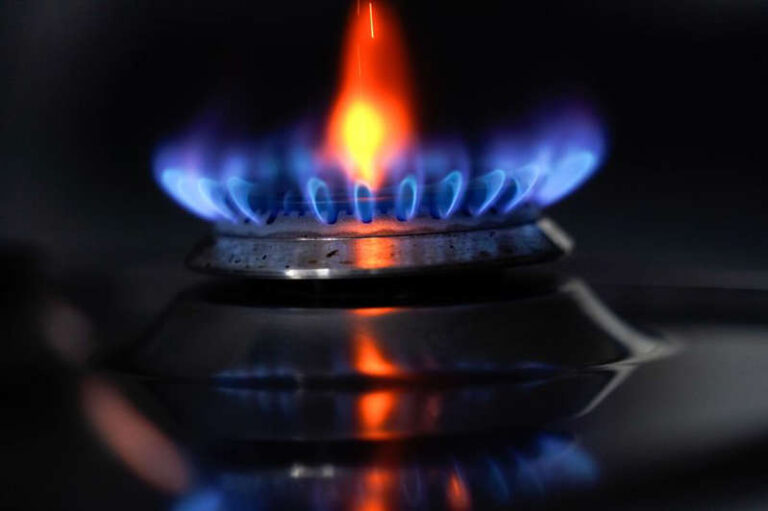
t means while the rest of the EU, which is much more tied to traditional fuels, has a pay cap of around €90 (£76.56) per megawatt-hour, Spain and Portugal would cap their price at €50 (£42.50). Currently, the Russian invasion of Ukraine is driving the price of fossil fuels to record levels.
Speaking to the Express, Rana Adib, executive director of REN21, a global community of renewable energy stakeholders, highlighted ways in which European countries can end their reliance on fossil fuels, particularly those imported from Russia.
She said: “What governments need to do is massively build up renewable power generation capacities, invest in energy saving and energy efficiency to bring down the cost of the energy bills as quickly as possible. When we’re looking at the example of Portugal and Spain, it’s very interesting.
“They have negotiated with the European Commission that they will basically leave the European energy market mechanism for 12 months because the interconnection does not allow them to receive a lot of renewable electricity from the north. By building on this, and building on their own renewable electricity capacity, the Spanish government expects that they will be able to reduce the cost of the bills by 30-40 percent.
“The governments that are front runners here really understand the opportunities around renewable energy and renewable electricity.”
After signing the agreement with the European Commission, Spanish Energy Minister Teresa Ribera said: “It is important to have a tool that reduces our exposure to the turbulence and volatility of the electricity market and the price of gas at this moment.”
Ms Adib noted that under the European mechanism, “the reality is that for a unit of energy you buy, you will pay the highest market price.”
Given that renewable energy generation is a lot cheaper than fossil fuels, she noted that the Iberian countries “now have the possibility to define their market mechanism where basically for fossil fuel they will pay one price, and for renewable-based electricity, they will pay another price.
“It’s more reflective of the generation of cost. As a result they expect the price to reduce by 30-40 percent, and they are doing this by integrating into the energy markets and into their electricity prices, their cost of generation.”
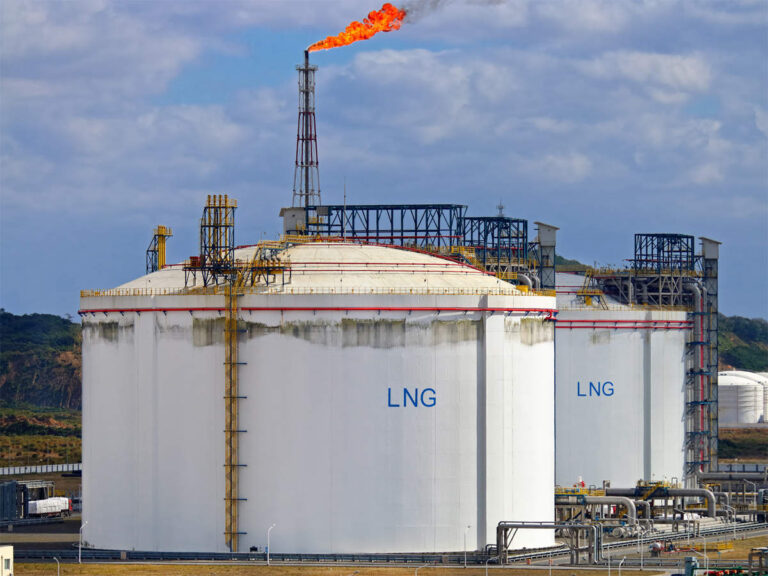
The South Asian nation intends to float a tender to purchase one LNG cargo per month for 10 to 15 years, said Shahid Khaqan Abbasi who is overseeing the energy sector for Prime Minister Shehbaz Sharif.
The government is still deciding the timeline for when to issue the tender, which they will use to gauge the market response and pricing, Abbasi said in an interview.
Sharif’s government will also speak with LNG suppliers in the Middle East, including Qatar, the UAE, Saudi Arabia and Oman, for a long-term contract, according to Abbasi.
Pakistan last week said it’s not ruling out a potential gas supply agreement with Russia.
Pakistan depends on overseas LNG for power generation, and was hit particularly hard by the surge in spot prices and supply disruptions. The cash-strapped government resorted to planned blackouts to conserve its dwindling supply of fuel.
Asian LNG spot prices are trading at a seasonal high after Russia’s invasion of Ukraine exacerbated an already tight market.
Pakistan was forced to purchase several expensive LNG shipments from the spot market to keep the lights on last month.
Long-term deals are much cheaper than current spot rates, and may provide some relief for Pakistan’s government.
Abbasi, who is a former prime minister and energy minister, signed several long-term LNG supply deals with Qatar, Eni SpA and Gunvor Group in 2016 and 2017.
However, Eni and Gunvor have canceled several scheduled cargoes to Pakistan in the last year, exacerbating the nation’s energy shortage and fueling political instability.
The suppliers backed out by paying a 30 percent penalty on the cost of the shipment, which is envisaged in the contracts if they cannot deliver.
The government will keep the 30 percent clause in future deals, said Abbasi, who explained that it is standard in contracts.
Pakistan is also open to signing a 30-year contract to make sure it has enough fuel to power its economy well into the future, said Abbasi.
Today, the industry’s longest deals rarely top 20 years.
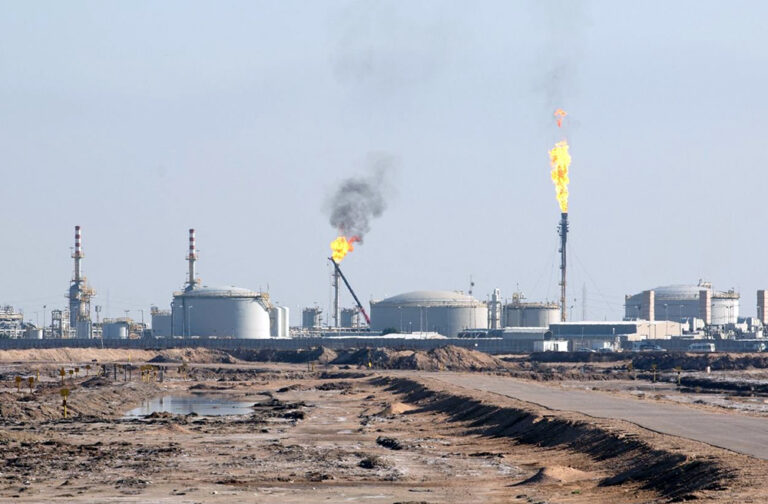
Iraq has failed to pay $1.6 billion owed to neighbouring Iran for gas imports, a debt needed to guarantee further supplies critical to prevent worsening power cuts, Baghdad’s authorities said Wednesday.
Payment of the debt was a key requirement to ensure energy supplies for Iraq’s power plants during the intense heat of the upcoming summer months, when electricity demands surge as people seek to keep cool.
“Iran had demanded the payment by Iraq of its financial obligations for the payment of the gas,” Iraq’s electricity ministry said in a statement.
However, due to “the delay in the adoption of the budget”, as well as parliamentary blockages stalling a bill aimed to guarantee debt payments in the electricity sector, this led to “delays”.
Supplies have already been reduced by five million cubic metres of gas per day, limiting the operation of the power stations and “reducing the hours of electricity supply”, the ministry added.
Despite its immense oil and gas reserves, Iraq remains dependent on imports to meet its energy needs.
Iran currently provides a third of Iraq’s gas and electricity needs, but supplies are regularly cut or reduced, aggravating daily load shedding.
The electricity ministry stressed the “efforts of parliament and the government” to allow the ministry to “find compromise solutions with Iran in order to pay the arrears and guarantee the supply of gas”.
The debt, which was due to have been paid by the start of June, dates back to 2020.
It was stalled amid sanctions against Iran by the United States, which mean that Baghdad cannot pay directly for energy imports in cash.
Instead, it must be used in a complicated process to buy goods from the agriculture or pharmaceutical sectors.
Last year, when temperatures in Iraq soared to 52 degrees Celsius (125 Fahrenheit) in the shade, swathes of the country suffered blackouts, sparking several sporadic protests and prompting the electricity minister to resign.
Iraq is already sweltering, with temperatures climbing to 48 degrees Celsius (118 Fahrenheit) on Thursday, according to the meteorological service.
Ranked as one of the world’s five most vulnerable nations to climate change effects, Iraq has seen a series of sandstorms sweep the country in recent months, sending thousands of people to hospital with respiratory problems.

Reuters Dubai/London
Opec+ is set to stick this week to its monthly modest oil output increases despite seeing tighter global markets, five Opec+ sources said on Wednesday as the group fast approaches its maximum production capacity.
Oil prices rallied above $124 per barrel this week following new EU sanctions against Russia over its invasion of Ukraine and China’s recovery from the latest Covid-19 lockdown.
The world’s most industrialised countries, known as G7, called again this week on Opec to help ease a global energy crunch that worsened as a result of Western sanctions imposed on Russia.
Opec, which meets on Thursday together with allies such as Russia as part of a group called Opec+, has repeatedly rebuffed calls for faster production increases. Opec+ is widely expected to raise July output targets by 432,000 bpd.
The group’s record output-cutting deal, clinched in 2020 at the height of global lockdowns, expires this September by which time the group will have limited spare capacity to increase production further.
Its lead member Saudi Arabia is producing 10.5mn bpd and has rarely tested sustained production levels above 11mn bpd.
Together with fellow Gulf Opec member, the United Arab Emirates, Opec is estimated to have less than 2mn bpd of spare capacity.
“There is not much spare oil in the market to replace potential lost barrels from Russia,” said Bjarne Schieldrop, chief commodities analyst at SEB bank.
He said the EU ban will likely result in Russia selling less oil but at a higher price and probably earning just as much if not more.
Western sanctions imposed on Russia may result in production and export cuts from the world’s second largest oil exporter of as much as 2mn-3mn bpd, according to various estimates.
However, Russian production has been holding strong so far as Moscow said it is managing to re-route volumes from Europe to Asian buyers, hungry for Russian oil, which sells at a steep discount.
The Wall Street Journal reported on Tuesday, citing Opec delegates, that some Opec members were considering the idea of suspending Russia from the deal to allow other producers to pump significantly more crude as sought by the United States and European nations.
The report came as US diplomats work on organising President Joe Biden first visit to Riyadh after two years of strained relations.
Two Opec+ sources told Reuters an Opec+ technical meeting on Wednesday did not discuss the idea of suspending Russia from the deal.
Six other Opec+ delegates said the idea was not being discussed by the group.
Russian Foreign Minister Sergei Lavrov, on a visit to Saudi Arabia, said on Wednesday that Opec+ co-operation was relevant for Russia.
Opec+ expects an oil market surplus of 1.4mn barrels per day (bpd) in 2022, 500,000 bpd less than previously forecast, two Opec+ sources told Reuters on Wednesday.